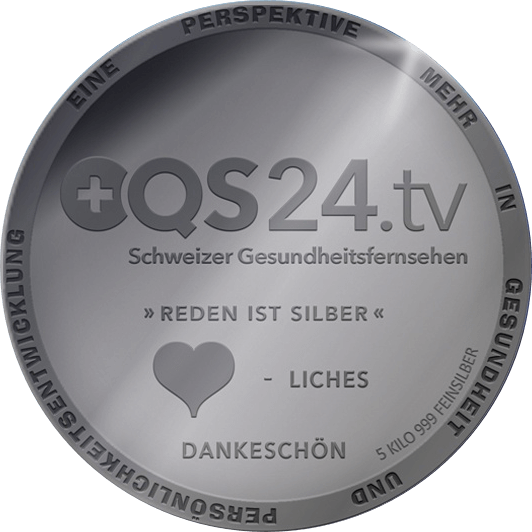Ozone therapy
Ozone- what is it and what kind of an effect does it have?
Ozone is the activated form of oxygen. While simple oxygen consists of two atoms tightly bonded to each other, ozone gas also contains an additional instable oxygen atom besides the two atoms in the oxygen molecule. It acts in a ''radical'' way: it avidly stimulates metabolic reactions in which it becomes bonded to other molecules and hence becomes stable again.
Slowing down of metabolism, accumulation of toxic substances and wastes and overacidification of the body leads to fatigue, immune weakness and greater susceptibility to certain diseases. Besides this, they also lead to a lowered blood supply of tissues and local hypoxia.
Ozone has a vaso-dilating, viricidal, fungicidal and bactericidal effect, i.e. it destroys viruses, bacteria and fungi. It changes the blood flow behaviour and increases deformation of red blood cells so that they can pass more easily through blood capillaries. The blood (and hence oxygen) can reach small blood vessels with greater ease and hence blood circulation is improved. Ozone also helps reduce pains, inflammatory processes and allergies.
In order to ensure normal progression of healing processes in the body, oxygen is needed in its activated form. Even the excretion of heavy metals and other toxic substances require increased metabolic activity. Ozone activates detoxifying enzymes and hence speeds up cleansing of the body and improves metabolism.
It helps disintegrate acidic waste substances more rapidly and hence balances any shifts in the environment. Ozone also supports the immune system and does so depending on its dose: according to the Arndt-Schulz law, high ozone doses have a diminishing effect on overstimulated immune functioning while lower ozone doses help stimulate the immune system. The dose dependant effect of ozone also helps explain the partly inconsistent or contradictory indications. Ozone is antiseptic and is regenerative despite this tissue.
Ozone
- has rejuvenating effects
- stimulates the metabolism
- detoxifies
- balances out any shift in environmental conditions
- strengthens the immune system
- acts against pains and inflammations
- is anti-allergic
How is ozone used for medical purposes?
From a container, pure oxygen gas surges past a UV lamp. The ultraviolet rays remove oxygen atoms from their stable bonds in the diatomic molecules and produce a mixture consisting of ozone and oxygen. The brighter the UV lamp is and the slower the oxygen surges past it the more ozone is produced and vice versa. Hence, the desired dose can be precisely adjusted.
At room temperature, ozone disintegrates rapidly back to oxygen if it hasn't been dissolved in blood in advance. After 15 minutes, the concentration sinks by 50%. Therefore, it is important to mix blood with ozone immediately after its withdrawal.
How is ozone treatment carried out?
- The most frequent form of treatment is infusion. It is also termed as ''autohaemodialysis'' or ''haematogenic oxidation therapy''.
- Here, the nurse / medical assistant takes around 70 to 100 ml of blood from a vein and collects it in a vacuum bottle of a sterile closed system. A natural substance helps prevent clotting.
- The nurse / medical assistant passes ozone gas through the blood and thus mixes it with erythrocytes (red blood cells) in the meantime. Ozone binds to the haemoglobin molecule (red blood pigment) and is hence available for exchange of substances.
- The blood activated with oxygen is now reinfused into the closed system laid on the vein.
Why is ozone smog harmful but ozone treatment is not?
- Even ozone in smog stimulates chemical processes and metabolic factors. In daily life, however, these self-regulated processes should not be altered; otherwise a disease may arise
- ''It is the dose that transforms a toxic substance into a healing method'', said Paracelsus
- The most sensitive part of the body with regard to harm caused by ozone is the respiratory tract. Here, the ozone smog has a major impact. Therapeutically, however, no one works with ''ozone inhalations''!
- Aim-oriented changes that may be brought about by a certain treatment need to be assessed differently from aimless changes that are brought about in daily life. Whilst in one case the effect of the therapist's hand may prove to be beneficial for a certain patient, it may have a completely opposite effect for someone else. This does not speak against the medicine but rather against false ''application''.
Main indications
- Blood circulation disorders (angina pectoris, Raynaud's disease, arteriosclerosis, apoplexy)
- Cancers
- Metabolic disorders
- Acute and chronic infections
- Conditions with oxygen deficiency
- Respiratory insufficiency, bronchial asthma, lung emphysema
- Fatigue, overexertion
- Acute and chronic pains and inflammations
Contraindications
- Acute bleeding or vulnerability to bleeding
- Hyperthyreosis
- Acute renal failure
- Acute apoplexy
- Convulsions
- Severe intoxication
- Pregnancy




